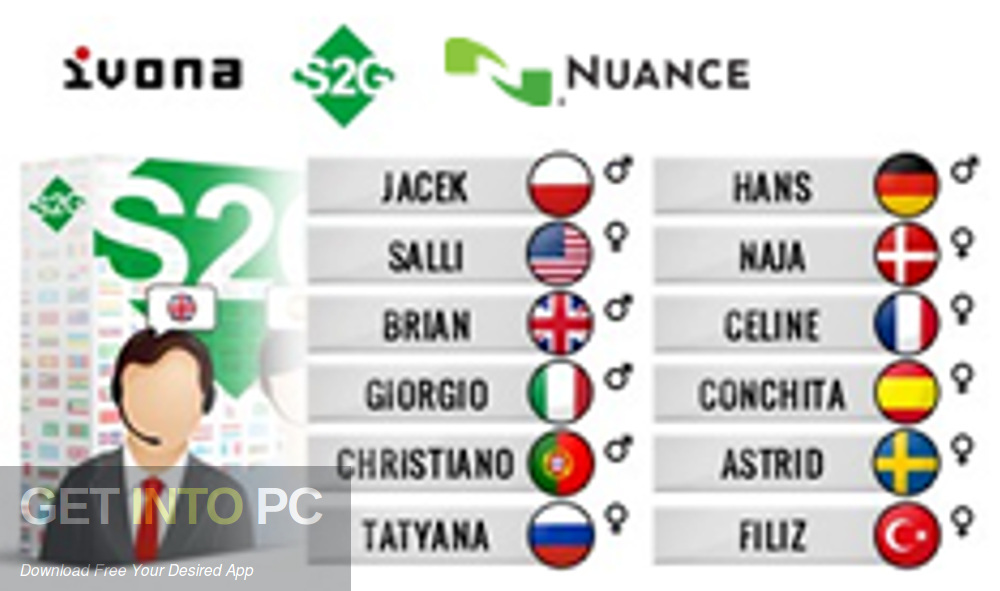

Acts as a Proxy for Nuance Services, with Data Integrations for Mix.dialog/DLGaaS.Gatsby, React and React-Bootstrap for the Client/Frontend.Monitoring is made available through Application Insights.ĭisclaimer: This sample client is not intended to illustrate a production-ready implementation it is intended to aid development, demonstration, troubleshooting, and other such use cases.
Nuance tts demo how to#
The prime purpose of this tool is to assist in Bot development and troubleshooting, including offering controlled hosted availability using Azure StaticWebApps.Īzure Functions with Core Tools are used throughout the development and deployment lifecycle.įor more information on how to leverage the client across various environments, see networking options, and be sure to secure your functions. The client uses the HTTP/1.1 transcoded version of the APIs (rather than the native HTTP/2 gRPC versions). Natural Language Understanding (NLUaaS).This demo client offers a sample integration to Nuance Mix's Conversational AI Runtime Services, specifically
Nuance tts demo license#
Neural Text-to-Speech-along with recent milestones in computer vision and question answering-is part of a larger Azure AI mission to provide relevant, meaningful AI solutions and services that work better for people because they better capture how people learn and work-with improved vision, knowledge understanding, and speech capabilities.Nuance Mix Demo Client Table of contents Overview About the Client Setup Functionality Intended Local Use Intended Hosted Use Pre-Requisites Quick Start 🚀 Getting Started Makefile Certificate Related make certs-prep make certs-setup Quick Start make launch Docker Host make containers-build make containers-run make containers-restart make containers-stop make containers-status make containers-logs make containers-clean Native Host make native-build-app make native-build-api make native-run-app-secure make native-run-api-secure make native-run-app-insecure make native-run-api-insecure make native-clean Data Access Endpoint Related make new-data-access-endpoint Setting Up Certificates Option 1: Run with Docker Option 2: Run Natively Create a New Data Access Endpoint Configuration Email capabilities (Optional) Conventions for Rich UI Rich Text Modality Stub Images for Carousels with Selectables Conventions for Link Handling Intent or Entity Sample Simulated Inputs Sample Data Access Integrations Using Client Fetch during development How-To: Add Handlers for Data Access Nodes Data Access Requests intended for the Client How-To: Add Handlers for Client Actions Client Location Capability Sample Data Integrations Yahoo Finance AccuWeather SendGrid Mock Phone Store Publishing to Azure License README.mdĭevelop and Troubleshoot Nuance Mix AI Powered Chat Bots locally and on Microsoft Azure. At the center of these efforts is XYZ-code, a joint representation of three cognitive attributes: monolingual text (X), audio or visual sensory signals (Y), and multilingual (Z). Neural Text-to-Speech (Neural TTS), a powerful speech synthesis capability of Azure Cognitive Services, enables developers to convert text to lifelike speech.įor more information about these efforts, read the XYZ-code blog post. It is used in voice assistant scenarios, content read aloud capabilities, accessibility tools, and more.

Neural TTS has now reached a significant milestone in Azure, with a new generation of Neural TTS model called Uni-TTSv4, whose quality shows no significant difference from sentence-level natural speech recordings. Microsoft debuted the original technology three years ago, with close to human-parity quality. This resulted in TTS audio that was more fluid, natural sounding, and better articulated. Since then, Neural TTS has been incorporated into Microsoft flagship products such as Edge Read Aloud, Immersive Reader, and Word Read Aloud. It’s also been adopted by many customers such as AT&T, Duolingo, Progressive, and more. Users can choose from multiple pre-set voices or record and upload their own sample to create custom voices instead. Over 110 languages are supported, including a wide array of language variants, also known as locales. The latest version of the model, Uni-TTSv4, is now shipping into production on a first set of eight voices (shown in the table below). We will continue to roll out the new model architecture to the remaining 110-plus languages and Custom Neural Voice in the coming milestone. Our users will automatically get significantly better-quality TTS through the Azure TTS API, Microsoft Office, and Edge browser. Text-to-speech quality is measured by the Mean Opinion Score (MOS), a widely recognized scoring method for speech quality evaluation.


 0 kommentar(er)
0 kommentar(er)
